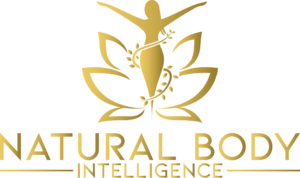Autism Spectrum: The Body’s Overloaded System Seeking Balance
Autism is often discussed as a neurological or developmental disorder that begins in early childhood, but from a Natural Hygiene perspective, the picture is broader and more compassionate. Autism is not a disease—it is a state of systemic overload, where the body and brain are trying to adapt to unnatural conditions in the modern world.
The rise in autism spectrum cases parallels the rise in processed foods, chemical exposure, environmental toxins, and overstimulation from screens and artificial light. The nervous system of a developing child becomes overburdened, and instead of functioning freely, it retreats into a protective mode. What medicine labels as “autism” may, in many cases, represent the body’s defence mechanism against toxicity and sensory chaos.
The Natural Hygiene Understanding
Natural Hygiene views all disease and dysfunction as expressions of toxaemia and enervation—the accumulation of waste and the depletion of nerve energy. The brain and nervous system are extremely sensitive to these conditions. When digestion, elimination, and rest are impaired, the bloodstream becomes polluted, and the brain receives unclean fuel.
In a child, this toxic load can interfere with the delicate balance of neural development. The brain, in its wisdom, attempts to conserve energy by withdrawing from overwhelming stimuli. What we call “autistic behaviour” is often the body’s intelligent attempt to protect the nervous system from further strain.
Causes of Nervous System Overload
- Toxic diet – Refined sugar, processed foods, and artificial additives burden the liver and brain.
- Early exposure to drugs or environmental chemicals – These disrupt metabolism and interfere with the body’s natural detoxification pathways.
- Excess stimulation – Screens, noise, and emotional stress overload the senses, particularly in children with high sensitivity.
- Lack of rest – Irregular sleep and poor emotional security prevent nerve recovery.
- Suppression of natural healing – The frequent use of antibiotics, fever reducers, and other drugs blocks the body’s cleansing responses.
Each of these factors contributes to a toxic, oxygen-deprived terrain where the nervous system struggles to function normally.
The Body’s Protective Intelligence
The Natural Hygiene model sees autism spectrum behaviours—repetition, sensitivity, withdrawal—not as random “symptoms” but as adaptations. The child’s system is overloaded, and these behaviours help regulate stimulation and maintain internal stability.
Just as fever burns off waste or skin eruptions push toxins outward, withdrawal and fixation can be viewed as protective adjustments—the nervous system’s way of maintaining survival under stress. When the load of toxicity and stimulation is reduced, the brain’s energy can be redirected to social, emotional, and cognitive growth.
Natural Hygiene Approach to Healing and Support
Healing does not mean “curing” autism—it means restoring vitality, comfort, and natural function at every level. The aim is to support the body’s self-healing capacity, reduce toxic burden, and create the calm conditions in which development can unfold naturally.
1. Cleanse and Simplify the Diet
Adopt a clean, fruit-based diet with leafy greens and tender vegetables. Avoid all stimulants, dairy, gluten, refined sugar, and chemical additives. The purer the food, the calmer the brain.
2. Support Natural Elimination
Allow the body’s cleansing processes—fever, mucus, or skin eruptions—to occur without suppression. Detoxification brings renewed balance to the nervous system.
3. Encourage Calm and Routine
Children on the spectrum thrive in peaceful, predictable environments. Natural light, regular sleep, and gentle transitions support neurological repair.
4. Fasting and Rest
Supervised fasting or short fruit-only periods can help clear the bloodstream and reduce irritability, allowing the body to reset.
5. Reduce Stimulation
Limit screens and artificial light. Encourage outdoor play, nature contact, and creative, sensory activities that soothe rather than excite the nerves.
6. Emotional Connection
Healing involves love, acceptance, and patience. Connection, not correction, brings safety to the nervous system.
The Deeper Message
Autism invites us to look beyond labels and see how profoundly the modern world has drifted from natural living. The rising number of sensitive children may be nature’s way of urging humanity to slow down, simplify, and purify. These children are not broken—they are responding honestly to a polluted, overstimulated world.
When their bodies are cleansed and their environments softened, many display extraordinary awareness, creativity, and insight. They remind us that healing lies not in control, but in creating harmony between the body, mind, and environment.
In Summary
Autism spectrum conditions are not the result of random genetics but the expression of an overwhelmed system trying to cope with unnatural living. The body and brain are doing their best to survive in a toxic world.
The path forward is not suppression but restoration—clean food, rest, sunlight, fresh air, emotional safety, and love. Under these conditions, the nervous system gradually finds balance, and the light of awareness shines more clearly.


